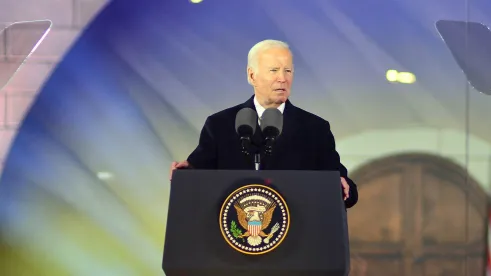Today, President Biden signed a new executive order further directing all federal agencies to prioritize environmental justice (EJ) initiatives in their core missions. The Executive Order, entitled Revitalizing Our Nation’s Commitment to Environmental Justice for All, builds on prior efforts, including Executive Order 12898 - the seminal EJ executive order signed by President Bill Clinton nearly three decades ago – and a long line of Biden Administration actions geared towards advancing EJ, including the Justice40 Initiative. The text of the executive order is available here, and the Administration’s accompanying fact sheet is available here.
The new executive order expands the traditional “environmental justice” definition that the U.S. Environmental Protection Agency uses by adding “Tribal affiliation” and “disability” as protected categories. EJ now explicitly applies to federal activities of “rulemaking, guidance, policy, program, practice, or action that affects or has the potential to affect human health and the environment,” and the order explains that federal activities may include assuring compliance, granting federal permission (e.g., issuing or reissuing permits and license), and doling out federal monies.
The executive order directs executive agencies to facilitate meaningful public engagement while generally instructing agencies to strengthen their EJ efforts. Specifically, agencies should inform nearby communities if a federal facility releases toxic substances. Additionally, agencies should use data and scientific research to understand the harm of pollution on public health and conduct more robust cumulative impacts analyses.
The executive order creates new White House offices to oversee these EJ efforts. A new Office of Environmental Justice will operate within the Council on Environmental Quality (CEQ). CEQ already guides interagency coordination on environmental policy among all federal agencies, including the implementation of the National Environmental Policy Act (NEPA). The executive order explicitly directs that NEPA reviews are carried out in a manner that “analyzes direct, indirect, and cumulative effects of Federal actions on communities with environmental justice concerns” and “provides opportunities for early and meaningful involvement in the environmental review process by communities with environmental justice concerns.” This placement suggests that NEPA will continue to be the primary statutory authority that federal agencies rely upon for EJ efforts and that EJ likely will feature in CEQ’s soon-expected “Phase 2” proposed amendments to its NEPA regulations. (A summary of CEQ’s “Phase 1" regulations is available here.) Additionally, a new Environmental Justice Subcommittee within the National Science and Technology Council, led by the Office of Science and Technology Policy, will coordinate the identification and resolution of perceived EJ data and research gaps.
Notably, the executive order substitutes the phrase “disproportionate and adverse” for the traditionally used “disproportionately high and adverse” effects phrase that stems from Executive Order 12898. Although this change in wording is subtle, and the White House reassures that the meaning is unchanged, this change could effectively lower the bar for what stakeholders or federal agencies consider significant impacts.
The Biden Administration continues to take unprecedented steps to advance its EJ goals. For example, within six months, the Chair of CEQ must issue “interim guidance” to agencies implementing the new executive order and submit annual reports to the President. Federal agencies will publish Environmental Justice Scorecards, “the first government-wide assessment of federal agencies’ efforts to advance environmental justice.” They must take stock of their EJ efforts to date and articulate their go-forward EJ strategies in Environmental Justice Strategic Plans. Consistent with the administration’s whole-of-government approach, the executive order’s accompanying fact sheet announces additional efforts that are not specific to EJ but will also advance those goals, such as a new strategy on plastics pollution. In addition, individual states continue to drive EJ policy, such as New Jersey’s publication this week of the implementing rules of the state’s landmark EJ legislation, among other varying approaches across the country, summarized here.
With the continuously evolving EJ landscape at the federal and state levels, industry should ensure they have visibility into EJ-related risks. This is particularly important if construction or operations require federal permitting, especially that triggers NEPA review, or occurs in the growing number of states that require EJ measures for certain state-level permits.







 />i
/>i
